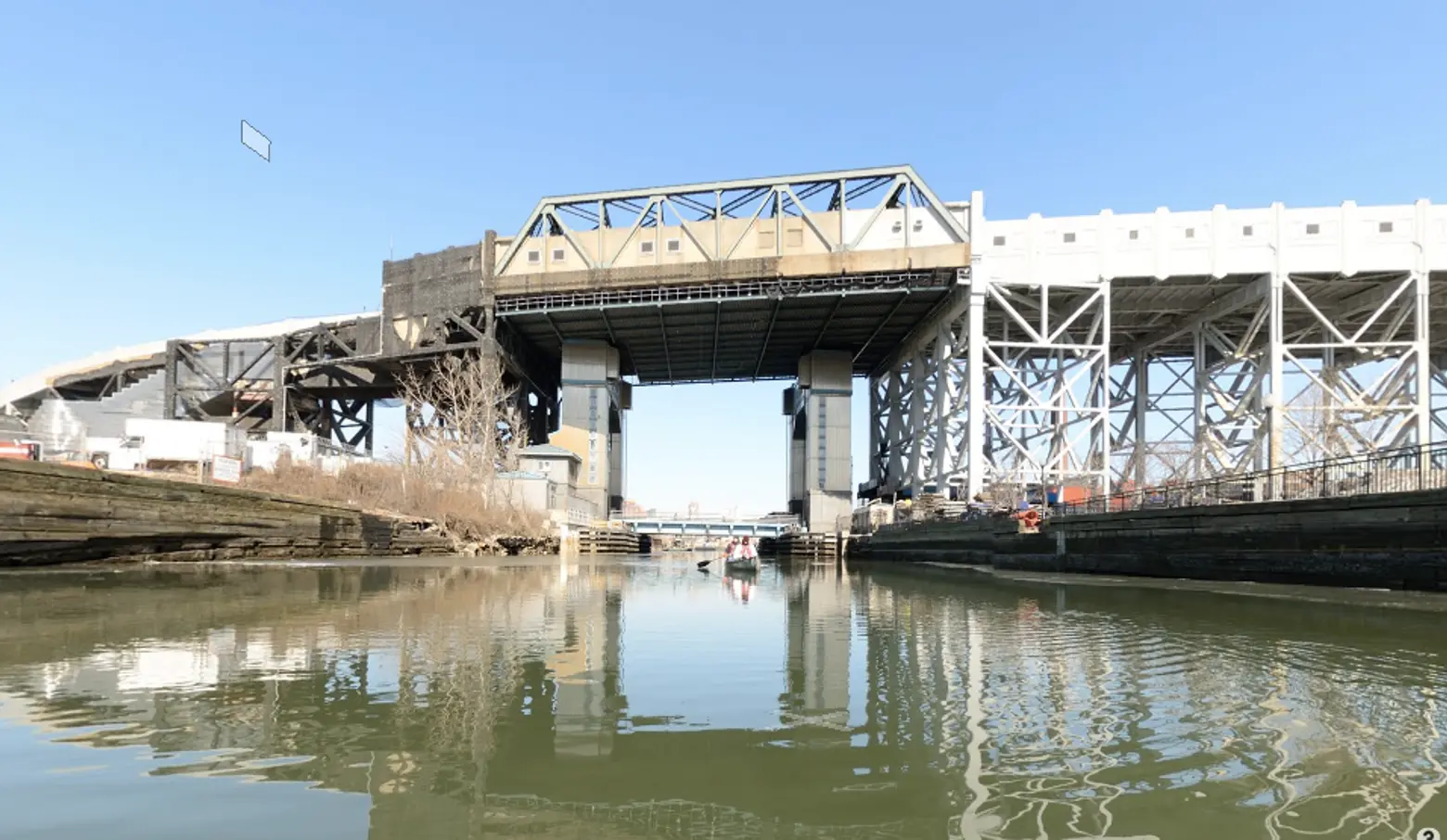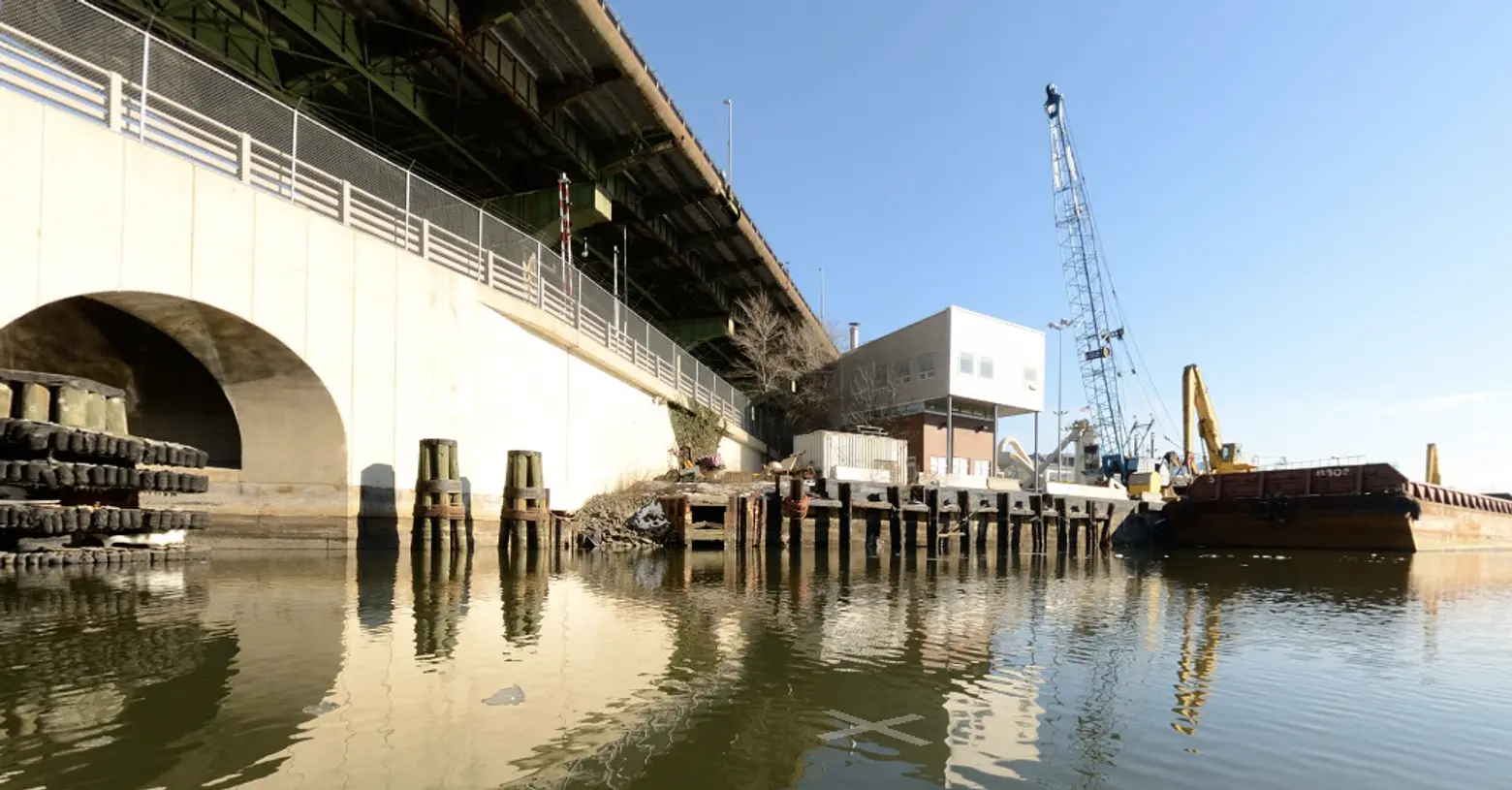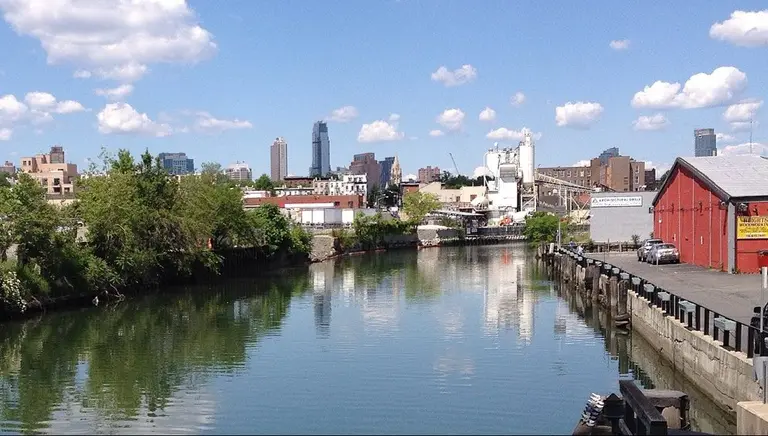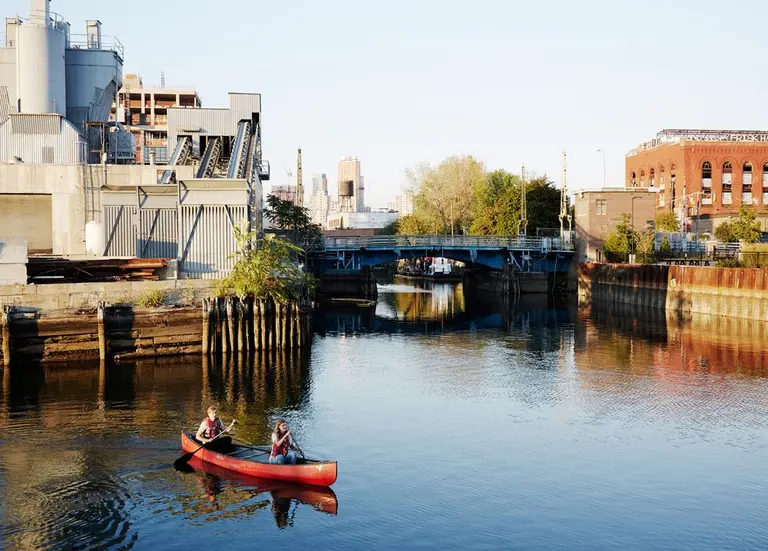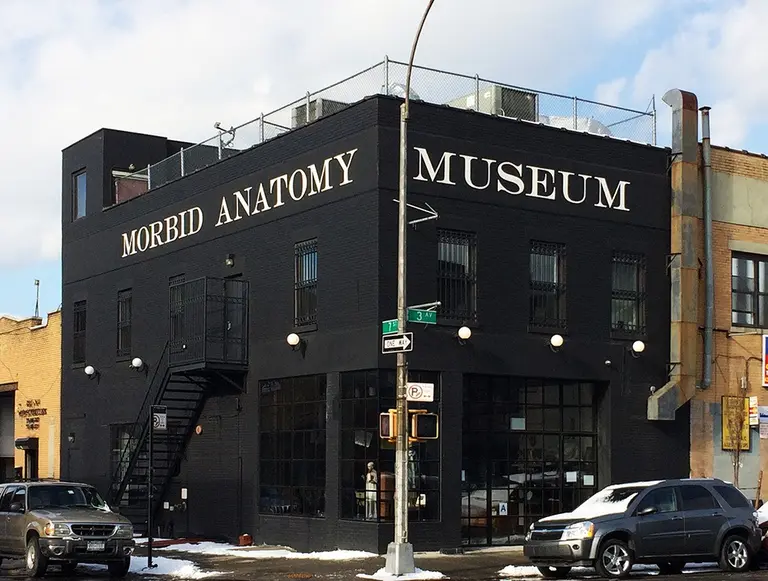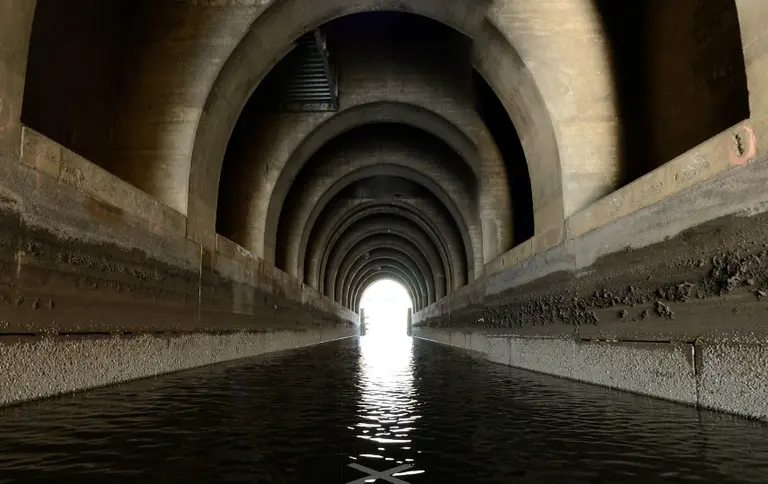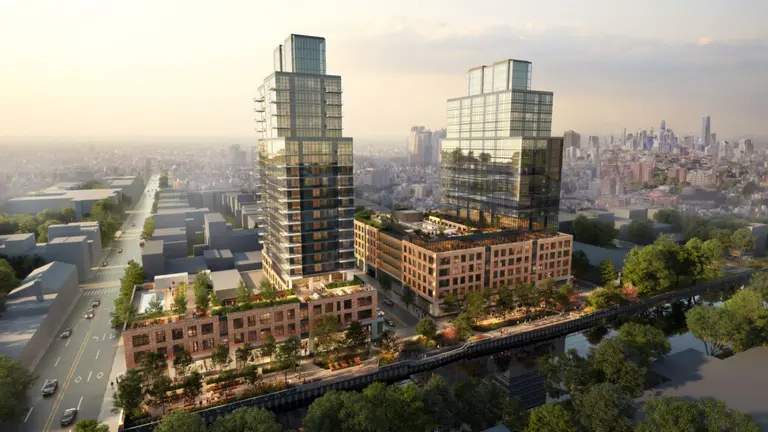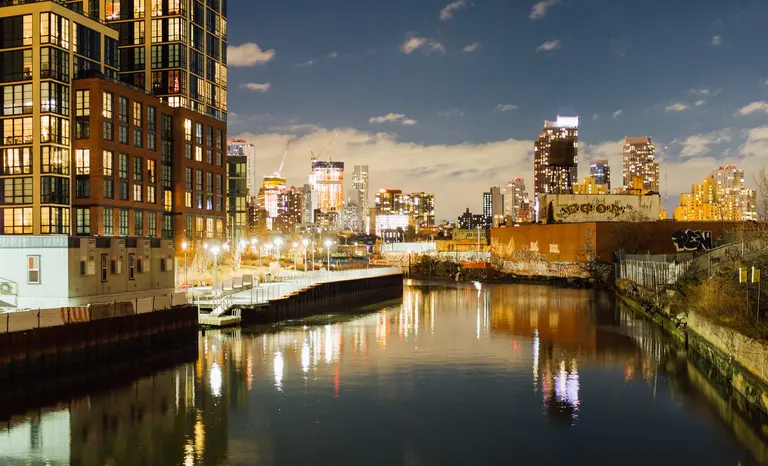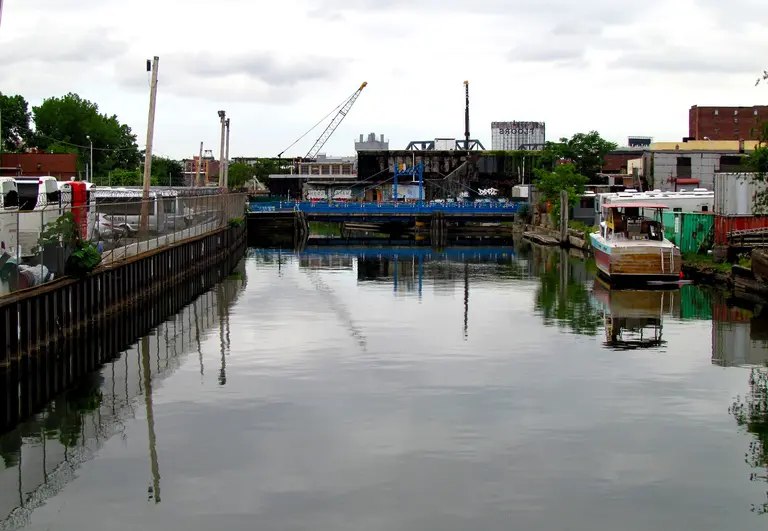You Can Now Investigate the Unseen Microbiology of the Gowanus Canal With the BK BioReactor
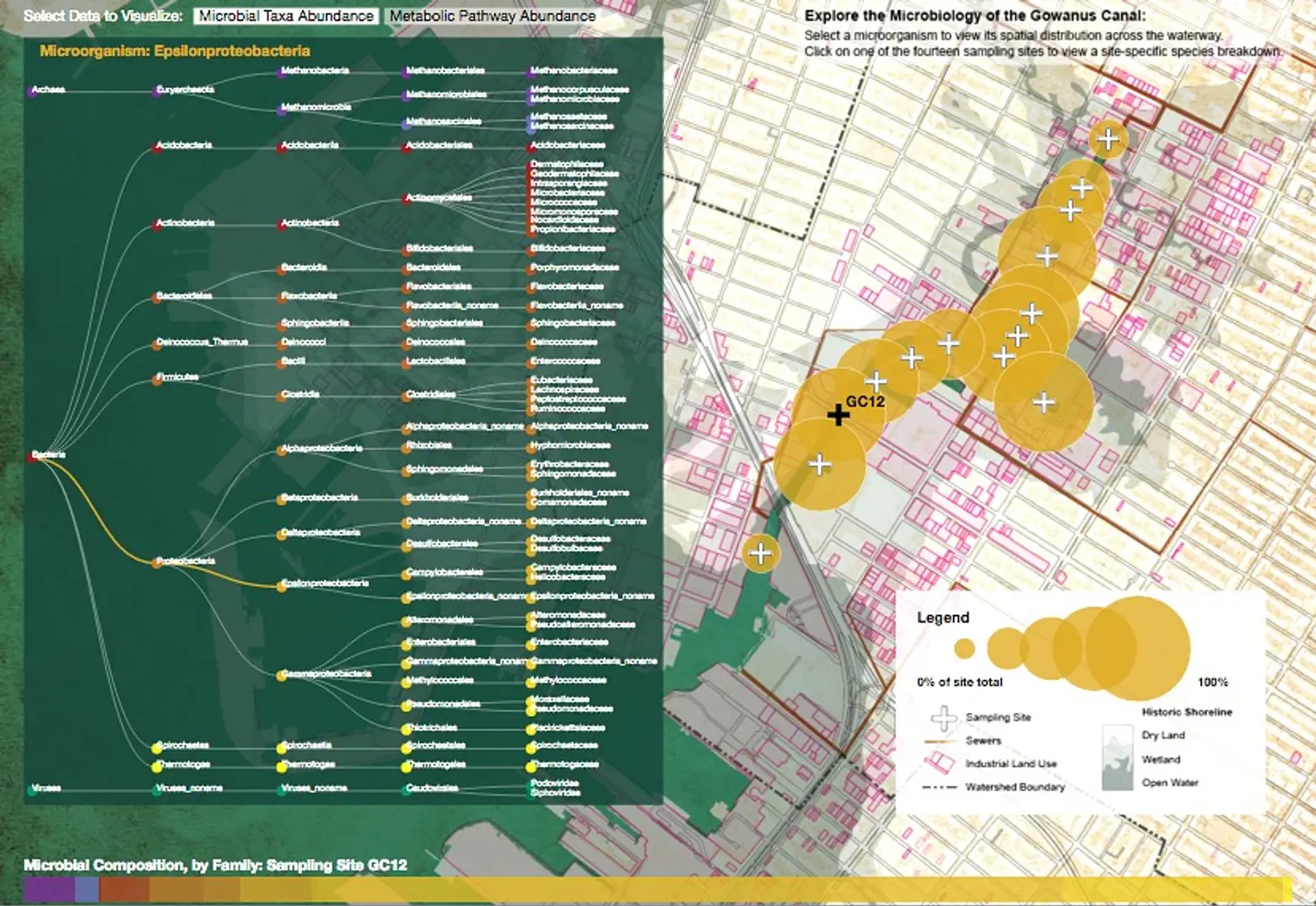
After all these years of jokes about catching syphilis or turning into a green mutant alien, it’s hard to imagine the Gowanus Canal as a pollutant-free place, but beginning this year it will undergo dredging and sub-aquatic capping as part of the USEPA Superfund Cleanup plan. This also includes the Gowanus Canal Sponge Park, “an 18,000-square-foot public space that will be built with engineered soil to absorb (hence “sponge”) stormwater that would otherwise pollute the canal, as well as plants to break down toxins and floating wetlands,” as 6sqft previously reported.
But before the notoriously toxic canal turns into the Venice of Brooklyn, a group of microbiologists want to catalogue and draw attention to exactly what type of unseen organisms have accumulated over the past 150 years, as they feel it’s important for work at other polluted urban environments. To do this, they’ve created the BK BioReactor, a roving watercraft that takes samples from 14 specific points along the canal. This data has been turned into a “mobile library,” complete with an interactive map that shows which microorganisms are located where and how heavily distributed they are. For example, Atrazine, a herbicide affecting the hormonal system, is present in most of the sites, as is Epsilonproteobacteria, which inhabit the digestive tracks of animals.
The BK BioReactor – OVERVIEW from Landscape Metrics on Vimeo
The project is a collaboration among Nelson Byrd Woltz Landscape Architects, GenSpace, Weill Cornell Medical College and the Gowanus Canal Conservancy. After the team took samples from the sites, they were sent to the lab at GenSpace to have their DNA tested and recorded. As they note:
Many of the species identified in preliminary samplings are also found in the human gut (a result of raw sewage) while other species reveal influence of the canal’s proximity to the ocean. Regardless of their source, the microbial melting pot of the canal has fine-tuned its metabolism, swapping genes with neighboring communities and evolving novel functions to develop real-time strategies for the unique state of the canal.
Here are some of the scariest organisms they found:
- Cresol, a highly toxic compound found in fuel processing activities
- Arsenic, a potent carginogen
- Toluene, which leads to asthma
- Atrazine, a herbicide that affects the endocrine system
- Aniline, which is used to produce dyes and plastics and affects the transport of oxygen to the blood
Explore the full interactive map here.
RELATED:
